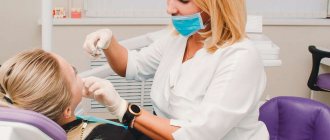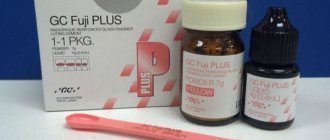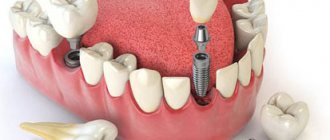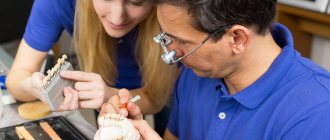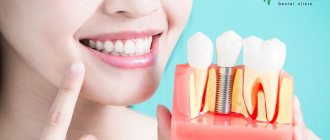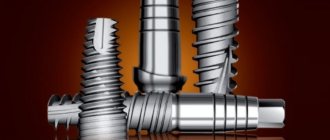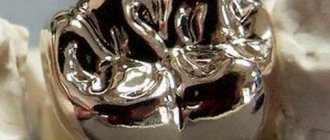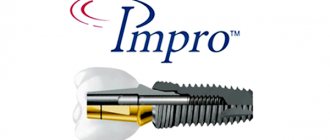The end of the year is a kind of time to take stock. We also decided to follow this tradition, but for the benefit of you, dear readers. All this year, the editors of Dental Magazine closely monitored the market, asked dentists for their opinions, and selected about 30 of the most popular and high-quality dental units that are worth their money and do not let the dentist down. Why installations? Yes, because you can’t go anywhere without it. A clinic can survive without x-rays, but not without an installation. Without a 3D scanner, a doctor can provide assistance, but without installation? Exactly. For a doctor, this is a primary tool, and there is no need to compare it with cars and other things. There is always a demand for equipment, because new clinics open, old devices break down, and a specialist spends a lot of time trying to find something that will help him provide quality care in the coming years. Therefore, Dental Magazine got down to business.
Before we started working on the article, we thought about the format. Agree, it is simply impossible to compare an installation that costs 200,000 and a “top-end” one that costs several million. They have different functionality, and their future owners have different budgets.
Therefore, it was decided to split the review into 3 parts:
- up to 500,000 rubles;
- up to 1,000,000 rubles;
- over 1,000,000 rubles.
The result was a very detailed market study for specialists with different purchasing powers. We decided to start in ascending order, and therefore in this article we will look at budget models. And honestly, some of them are able to give a head start to their more expensive “brothers”. These are high-quality models with five instruments, a comfortable patient chair, good electronics, a convenient hydraulic unit and a long service life.
Dentistry BC
Vedic texts, one of the oldest handwritten monuments in history, teach: “The doctor has three weapons: the word, the plant and the knife.”
The “word” in those distant times, when people believed in magic, meant ritual spells and sacred chants that accompanied the healing process and imparted divine power to medicines obtained from medicinal plants. The art of healing has been known since the time of the first dynasties of Ancient Egypt (3500-3000 BC), where there were “houses of life” - prototypes of modern universities, in which, along with mathematics, astrology and other sciences, medicine was also studied.
Ancient doctors attributed dental diseases to worms that spontaneously generated and ate the diseased tooth from the inside. Svetlana Marchukova in her book “Medicine in the Mirror of History” writes: “Greek and Roman doctors attributed caries to poor nutrition, deterioration of oral mucus, or the action of a toothworm. Hindus and Arabs saw the cause of toothache in the fact that a worm was moving in the hollow of the tooth. European doctors claimed in medical treatises of the 16th-17th centuries that they saw toothworms with their own eyes and described them in detail. German professor of medicine in the 17th century. reported that he was able to extract animals the size of an earthworm from a tooth using the gastric juice of a pig. His Italian contemporary and colleague explained the origin of toothworms by saying that they develop from fly larvae that fall into the hollow of a diseased tooth along with food. Later, the traditional image of a worm in the art of dental healing was associated with the need to remove the nerve of a diseased tooth. This procedure was called “grabbing the worm by the leg”, “pulling the worm out of a sore tooth.”
Despite the theory of dental disease that is so exotic for modern people, the ancient doctors of Mesopotamia, China, India, Tibet, Ancient Greece and Ancient Rome knew and often successfully used medicinal plants and surgical techniques to help with toothache or periodontal diseases. True, the treatment methods, although effective, were quite harsh: for example, the inflamed pulp was burned out with a hot needle, and hot oil was dripped into the carious cavity. The cavity was filled by filling it with molten lead, silver or gold. Prosthetics was well developed - dentures were made from precious stones and metals, carved from animal bones and hard wood of valuable species.
Dental Center for New Technologies "NOVOSTOM"
He has been providing services for over 27 years. Currently it consists of 7 clinics, 3 of which are located in Moscow (near the Komsomolskaya, Prospekt Vernadskogo and Domodedovskaya metro stations). Thanks to affordable prices, high-quality treatment and friendly service from the administrative staff, people constantly turn to NOVOSTOM.
"NOVOSTOM" consists of 7 clinics, 3 of which are located in Moscow
During implantation, doctors use certified materials, which guarantees the wear resistance and durability of the implanted titanium pins.
Middle Ages and Renaissance
Medieval medicine did not leave any noticeable mark on the history of medicine in general and dentistry in particular. This is due, firstly, to the decline of surgery, since, according to church representatives, engaging in “digging in the entrails” was unworthy of an educated doctor. And secondly, the medicine of that era was scholastic in the sense that it was divorced from real practice. Often, doctors at a consultation argued about the accuracy of a quote from a medical treatise instead of proposing specific methods of treating the patient. The role of surgeons and dentists was taken on by bath attendants, barbers, farriers and even executioners. Moreover, some of them knew how to masterfully pull out teeth thanks to extensive practice, because any treatment boiled down to removing the diseased tooth.
In the 15th-17th centuries, despite the fact that universities began to study surgery, the confrontation between surgeons and doctors continued. Surgeons and dentists were called charlatans, i.e. “medics who have not received any medical education” and these occupations were considered unworthy of a gentleman. According to the Englishman Henry Peacham, which he expressed in his Treatise on the Perfect Gentleman (16th century), gentlemen can be lawyers or doctors with the exception of dentists, surgeons and obstetricians. This opinion turned out to be very stable and until the beginning of the 19th century, dentists were very reluctantly accepted into English high society.
Esthetic Classic Dent
Dental implantation is one of the leading areas of the clinic. During its existence, more than 1000 implants were installed. Dentistry has its own technological equipment (CAD/CAM). The clinic’s doctors carry out the procedure without complications, accurately selecting the most suitable materials and implantation technique.
The clinic has certificates and licenses (you can view them on the official website). The press regularly writes about “Esthetic Classic Dent” dentistry in its articles. The initial consultation is free for all clients.
Dentistry of the 18th - 20th centuries
But, despite all the difficulties, dentistry gradually developed: dental equipment was created, instruments and treatment methods were improved. As a scientific discipline, dentistry began to develop thanks to the work of the French surgeon Pierre Fauchard (lived 1678-1762). Fauchard wrote a monumental work, “The Dentist-Surgeon, or a Treatise on Teeth,” where he described more than 120 dental diseases, completely debunking the myth of “tooth worms.” He developed a new method of removing teeth, with the patient sitting in a chair and the dentist standing to the side or behind him.
The creation of the first dental chair marked a new milestone in the development of practical dentistry. Already in 1790, John Greenwood, George Washington's personal dentist, designed the prototype of a modern dental unit, which was powered by a foot drive and a spinning wheel. In 1868, George Green developed a foot-powered pneumatic drill that operated at an incredible speed of 2000 revolutions per minute at the time. After 5 years, Green created an electrically driven drill, the speed of which already reached 10,000 revolutions per minute. For some unknown reason, this model was not popular among dentists and only became popular at the beginning of the 20th century.
In Russia at the beginning of the 20th century there was no domestic production of dental units, and they were purchased from England, France and America. But with the outbreak of the First World War, purchases stopped and by the mid-30s the production of electromechanical drills with a multi-link belt drive was established. These installations were actively used until the mid-90s of the 20th century and were characterized by high levels of vibration, noise and low rotation speed of the bur (from 10,000 to 30,000 rpm). The result is pain for the patient, the smell of burnt bone and crumbled teeth. Most people of that generation who had the opportunity to “treat” their teeth using such a device remember this procedure with horror.
NovaDent
The clinic has been occupying a leading position in the lists of the best dentists in the budget price segment for several years. Due to low prices, NovaDent always has a lot of clients. The initial appointment is free. Dentistry has many awards and achievements in the field of implantation.
The initial appointment at NovaDent is free
In addition to a flexible pricing policy, a significant advantage of the clinic is its 24-hour operation. This is very convenient for people with busy schedules who do not have the opportunity to visit dentistry during the day.
Dentistry of the 21st century or How to choose a dental unit
The 2000s in Russia mark the heyday of private dental clinics equipped with imported dental units in which the bur rotation speed reached 300,000 rpm. Actually, nothing has changed since then, except that there are disproportionately more foreign manufacturers on the Russian market, the capabilities of dental units are constantly being improved, and the choice has become more difficult for buyers.
So, how to choose a dental unit? First, you need to decide on a few key points:
- What specialists will work on it (therapist, surgeon, orthodontist, etc.).
- Budget amount, including the purchase of necessary additional equipment.
As a rule, inexpensive dental units are designed for therapeutic use only. The technical characteristics and functionality of such installations do not allow surgical, orthodontic and other procedures to be performed.
The appearance of the unit plays an important role in the choice - the results of studies conducted in several large clinics showed that patients feel maximum safety and trust in the quality of treatment when installing the most modern design.
Rating and TOP 10 best dental clinics in Moscow for dental implantation in 2020
The loss of one or more teeth is accompanied not only by poor aesthetics, but also by the appearance of problems from a functional point of view. There is a risk that the chewing load will be distributed unevenly. As a result, this will lead to deformation of the dentition and pathological changes in bone tissue.
To avoid such complications, doctors prescribe implantation. This is the most effective method of restoring lost teeth, during which a titanium root is implanted into the jaw bone. Implantation is a serious procedure, so it is important to be responsible when choosing a clinic that will perform it.
Patient chair
A good patient chair must meet two requirements: firstly, to create comfort for the patient during treatment and, secondly, not to interfere with the doctor while working. The chairs differ:
- Lifting mechanism: electromechanical or hydraulic. According to a number of technical parameters, an electromechanical chair is considered more reliable and durable, but a hydraulic lift is distinguished by the accuracy of adjustment of different positions.
- Anatomical design: with knee and back articulation, with back articulation only, with articulating headrest. Double articulation is preferable: in the lumbar and knee areas and articulation of the headrest along 4 axes, as this allows the patient to take the most comfortable position for treatment. The presence of armrests will also be a plus.
Material: as a rule, the upholstery uses a special seamless coating with antibacterial impregnation, anti-slip effect and increased resistance to mechanical stress, the internal filler is latex. In business and premium class models, “memoriform” material is used as an internal filler (takes the shape of the body), and the upholstery can be made of specially treated genuine leather.
Number of position adjustments. The standard number is 5 positions (top, bottom, forward, backward, horizontal). Additional features: rinsing function, return to starting position, synchronous movement of the back and knee areas.
Mercury AY-A 3600
Mercury AY-A 3600
If you are still skeptical about Chinese equipment, then we assure you that you are very mistaken. China can be of high quality, convenient and reliable even in this price segment. This installation is a clear confirmation of this. This particular model has become the best-selling in the line. And here it’s not just the extremely reasonable price.
Regarding technical characteristics, AY-A 3600 is one of the most powerful and convenient in its category. The bottom method of feeding tools, favored by many, makes work easy and convenient. The medical module is equipped with two M4 turbine hoses, one turbine hose with M4 Midwest fiber optics, a X-ray viewer, a chair control sensor unit and other pleasant functions.
The unit is equipped with a rotating hydraulic unit, which allows the doctor to approach the patient from both the right and left sides. A shadowless lamp and a pantograph with an air brake add comfort. The set includes a rotating doctor's chair and an assistant's chair, and the installation itself can be supplemented with a monitor and an intraoral camera.
The installation is made so that the patient tries to relax as much as possible in such a stressful moment for himself. Therefore, the unit is equipped with an electromechanical leather chair with soft upholstery and two armrests. The upholstery color can be chosen from 16 options.
Characteristics:
- Dimensions: 3400 x 1950 x 1700 mm;
- Weight: Weight: 208 kg;
- Number of tools: 5;
- Patient chair: Electromechanical;
- Tool feed: bottom feed;
- Valve block type: Ejector;
- Lamp: diode touch 6-point, 25,000 - 45,000 lux;
Price: 210,250 rub.
WHERE CAN I BUY
Doctor module
As a rule, the doctor’s module is designed for 5 instruments plus 1-2 additional ones (in economy class units there may be 3 instruments in the basic configuration). A distinction is made between placing the block on a pantographic or rigid arm, as well as upper and lower feeding of tools, each of which has its own pros and cons.
With top delivery, doctors pay attention to the length of the hoses, which can limit the doctor's movements and create a constant load on the hand if the hoses are short and the unit is not equipped with pretensioners. But with the upper placement, the doctor does not have to worry that the instrument will accidentally fall.
With lower placement, there are no problems with a sufficient length of hoses, but there is a possibility of the tool falling out of the socket if installed inaccurately and imperceptible accumulation of dirt in the inside of the mounting sockets.- A pantographic arm with pneumatic or mechanical locking and a stabilization system allows you to adjust the movement of the module vertically and horizontally and install it in the most convenient position for the doctor. A hard shoulder moves only horizontally, but has a price advantage.
- The control unit for installation functions differs in touch and button panels and the presence/absence of a screen for visual control of the operation of the tools.
Meditech XP300
Meditech XP300
For little money, you get a reliable and ergonomic installation with good equipment for the doctor and assistant module, and a well-thought-out design of the chair. Therefore, both the doctor and the patient will feel comfortable. By the way, the doctor will also be comfortable because the set includes an ergonomic doctor’s chair. The upholstery color can be chosen from 18 options.
The standard package includes a fiber optics unit for powering the illuminated tips. The lighting is provided by a shadow-free halogen lamp with a convenient D140A positioning system; it is also possible to replace the halogen lamp with an LED lamp to choose from 11 options (including a surgical option). The luminous flux power is sufficient to fully illuminate the work area.
Thanks to its small size and functionality, the XP300 is suitable for both a large clinic and a small private practice. Do not be confused by the apparent modesty of the characteristics, it fully satisfies the basic clinical needs of the work.
Characteristics:
- Dimensions: 1430 x 1050 x 1800 mm;
- Weight: 230 kg;
- Number of places for tools: 5;
- Patient chair: Electromechanical;
- Tool supply: Optional;
- Type of saliva ejector and vacuum cleaner: Ejector (water or air options available)
- Lamp: shadowless halogen lamp D140A, 7000-15000 lux;
Price: 132,000 – 170,000 rub. depending on configuration
WHERE CAN I BUY
Assistant module
The standard assistant module is equipped with 3 tools: a vacuum cleaner, a saliva ejector, a water-air gun and a slot for an additional fourth tool. In extended variations, the assistant module can have:
- Fifth tool socket
- Built-in remote control for chair, lamp, spittoon, internal hygiene system
- Pantographic arm with positioning system
- Wet aspiration on/off system
DentaVita
In the premium dentistry segment, DentaVita occupies a leading position every year. There are 10 branches in Moscow, which are conveniently located (within the Garden Ring). You can get there both by personal and public transport.
DentaVita has 10 branches in Moscow
The clinic uses equipment and materials produced by leading companies in Europe, the USA and Japan. There are safe systems “Anti-AIDS” and “Anti-Hepatitis”. If necessary, you can get advice from an employee on the official website online.
Hydraulic unit
The hydroblock contains a spittoon bowl and a glass for the patient. A ceramic rotating bowl is more functional, reliable and meets hygienic safety requirements; a glass fixed bowl is more affordable.
Inside the hydraulic unit there is a suction system for liquids (saliva, blood, etc.) and solid particles (tooth chips, filling material) from the patient’s oral cavity. The following types of aspiration systems are distinguished:
- The ejector system operates on the principle of hydrodynamics, which creates a reverse air flow that sucks in liquid and solid particles.
- The vacuum system is based on the creation of a discharged area through the operation of a vacuum compressor. For the vacuum aspiration system to operate correctly, it is necessary to install a separator to separate solid particles from the liquid. Vacuum aspiration systems are divided into individual and centralized.
Additionally, the hydraulic unit can be equipped with the following systems:
- Amalgam separator for separating and collecting amalgam into a special container
- Water heating for water-air gun
- The hygienic safety system allows for internal disinfection of the installation’s water circuit hoses
- The disinfection system ensures the cleanliness of the liquid supplied to the instruments
Dr. Bon
The clinic has been providing good conditions for the full implantation cycle for more than 15 years. It is located next to the metro (on Bratislavskaya Street), so there will be no problems with the road. The cost of services is affordable, there is a loyalty program (for regular customers).
The Doctor Bon clinic has been operating for 15 years
Due to the high qualifications of doctors, it is possible to perform work of varying levels of complexity. This is confirmed by positive reviews from patients (you can read them on the clinic’s website). Customer trust is the main thing for Doctor Bon dentistry.
Important! Installation Maintenance
With all the variety of choice of sellers - both direct suppliers and dealers - before making the final decision to purchase the installation, you definitely need to clarify one very important point:
- Does the seller have its own service center, spare parts warehouse and specialists who will service your expensive purchase during the warranty period and after its expiration?
The fact is that the dental unit, being a technically complex piece of equipment, requires preventive inspections and scheduled replacement of consumable parts for long-term operation. This work should only be carried out by a certified, trained engineer.
Beauty Line
Dental implantation is the leading one. Experienced doctors help patients restore their teeth using proven technologies and materials. They are able to cope with even advanced clinical cases, carry out implantation painlessly and in the shortest possible time.
Both the classical two-stage technique and express implantation are actively used. Thanks to the use of a laser, the risk of complications is reduced to zero, and the survival rate of the implant is accelerated. “Beauty Line” deservedly takes 3rd place in the ranking.
Conclusion
If you are buying a dental unit to equip a new clinic or office, which in the future will operate at low prices or is limited in budget, then it makes sense to consider economy and middle-class equipment. Such installations operate without problems for about five years, subject to timely maintenance, and fully pay for themselves in an average year. At the same time, the quality of treatment is at a good level, which is an important point for patients and a key factor in the further growth of your business.
When opening a VIP-level clinic or purchasing an installation for an existing clinic, it is recommended to choose business and premium class installations. Firstly, they are distinguished by a large number of electronics and wider functionality, both basic and additional, which allows them not to become technically obsolete for a long time. Secondly, equipment in the high price range is made from higher quality materials (plastic, metal, rubber), which has a positive effect on the durability of their work.
But no matter what dental unit you buy, remember - any model requires high-quality maintenance, which can only be carried out by certified service engineers.
Our online store presents dental units in a wide price range, starting from the U100 model of the Chinese company Siger for 199,900 rubles. and ending with the Italian model Skema 8 from Castellini for 1,180,300 rubles. The catalog also presents additional equipment for them (finials, chairs, lamps) from Chinese, Korean and Italian manufacturers
Ritter Ultimate
Ritter Ultimate
It may seem strange to some, but even in this price range you can find that very “German quality” represented by the legendary company Ritter. It is the oldest premium brand of dental chairs in the entire world, founded in 1887, and to this day remains one of the leading suppliers of dental equipment.
Ritter Ultimate embodies the reliability and quality you expect. With proper care, it can last for more than ten years without interruption and maintenance. Dentists who work on this installation note that it is very difficult to find any alternative to them.
The doctor's unit includes five instruments. It also contains a touch-sensitive programmable doctor’s console with an integrated negotoscope for targeted images. The ergonomic patient chair with protection against the “folding effect” can be programmed in five positions. It can be adjusted from the dentist and assistant panels, as well as using the multifunctional control pedal.
The kit also includes a doctor's chair with an adjustable backrest on a five-beam base on double casters.
Characteristics:
- Weight: 250 kg;
- Water consumption liters per minute: No more than 5;
- Number of tools: 5;
- Patient chair: Electromechanical;
- Tool supply: Optional;
- Valve block type: Ejector;
Price: 362,000 rub.
WHERE CAN I BUY
Tips and tricks for extending the life of dental compressors
Caring for air mixture injection devices is simple and does not require special skills and knowledge.
- remove condensate that has accumulated in the receiver - this is easy to do by flushing water under low pressure (up to 2 bar);
- remove liquid that has accumulated in the condenser.
Once a month you need to:
- check all connections for leaks;
- check that the operating pressure corresponds to that stated in the operating instructions;
- carry out wet cleaning of the condenser and radiator (due to the accumulation of dust, they give off heat worse and cool the unit more slowly).
Once a year it is required:
- check the cleanliness of the incoming filter (if the contamination is light, clean it; if the dirt is not removed, the cleaning cartridge must be replaced);
- After turning off the device, check the tightness of the ring on the outlet valve;
- check the functionality of the safety valve (it is enough to press it while the device is operating and evaluate the result of the action by the noise of the released air).
Calling a specialist is required in the following cases:
- During operation of the device, loud noise is heard and vibration increases;
- the pressure in the working chamber builds up more slowly than usual, or the device does not reach operating pressure;
- Fans in the cooling system do not work;
- the unit turns on spontaneously when none of the consumers is active;
- the device is too hot;
- The device does not turn on.
